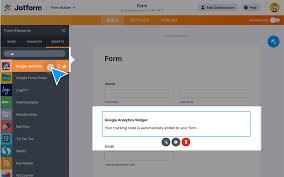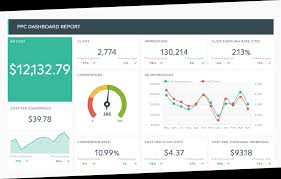Analytics and Tracking: Unlocking the Power of Data for Business Success
In today’s digital age, data has become a valuable asset for businesses of all sizes. It holds the key to understanding customer behavior, identifying trends, and making informed decisions. Analytics and tracking play a crucial role in harnessing the power of data and turning it into actionable insights.
Analytics refers to the process of collecting, analyzing, and interpreting data to gain meaningful insights into various aspects of a business. By tracking key metrics, businesses can measure their performance, identify areas for improvement, and make data-driven decisions.
One of the most significant advantages of analytics is its ability to provide a comprehensive view of customer behavior. By tracking user interactions on websites, social media platforms, or mobile apps, businesses can gain insights into how customers engage with their brand. This information can help optimize marketing campaigns, improve user experience, and tailor products or services to meet customer needs.
Tracking also plays a vital role in measuring the effectiveness of marketing efforts. By implementing tracking codes or pixels on websites or advertisements, businesses can monitor conversions, track ad performance, and attribute sales or leads to specific marketing channels. This allows for better allocation of resources and optimization of marketing strategies.
Furthermore, analytics and tracking enable businesses to identify trends and patterns in consumer behavior. By analyzing historical data over time, businesses can uncover valuable insights that can shape future strategies. For example, identifying seasonal buying patterns or understanding which products are most popular among certain demographics can help optimize inventory management or target specific customer segments more effectively.
Moreover, analytics and tracking allow businesses to measure the success of their website or app by monitoring metrics such as bounce rate, time on page, or click-through rates. This information helps identify areas where user experience can be improved and guides website optimization efforts.
Implementing analytics and tracking solutions may seem daunting at first glance; however, there are numerous tools available that simplify the process. From robust platforms like Google Analytics to specialized software tailored to specific industries, businesses have access to a wide range of options that suit their needs and budget.
It is important to note that while analytics and tracking provide valuable insights, businesses must also prioritize data privacy and security. Adhering to data protection regulations and implementing proper security measures ensures that customer information remains confidential and builds trust with consumers.
In conclusion, analytics and tracking are indispensable tools for businesses looking to thrive in the digital landscape. By leveraging the power of data, businesses can gain a competitive edge, optimize marketing efforts, enhance user experience, and make informed decisions that drive growth. Embracing analytics and tracking is not just a trend; it is an essential component of a successful business strategy in today’s data-driven world.
7 Frequently Asked Questions About Analytics and Tracking: A Comprehensive Guide
- What kind of analytics and tracking tools should I use?
- How can I track website performance?
- How do I measure the success of my digital marketing campaigns?
- What are the benefits of using analytics and tracking tools?
- How can I use analytics to improve customer experience?
- Which metrics should I be tracking for my business?
- How can analytics help me make better decisions?
What kind of analytics and tracking tools should I use?
When it comes to choosing analytics and tracking tools, the right ones for your business will depend on your specific needs, goals, and budget. Here are some popular options to consider:
- Google Analytics: This is one of the most widely used analytics tools and offers robust features for tracking website traffic, user behavior, conversions, and more. It provides valuable insights into audience demographics, acquisition channels, and user engagement.
- Adobe Analytics: This enterprise-level analytics solution offers advanced features for tracking and analyzing data across multiple channels. It provides comprehensive reporting capabilities and customizable dashboards to monitor key metrics.
- Kissmetrics: This tool focuses on customer behavior analysis and helps businesses understand how customers interact with their brand across different touchpoints. It provides insights into customer journeys, conversion funnels, and cohort analysis.
- Mixpanel: Mixpanel specializes in event-based analytics, allowing businesses to track specific actions or events taken by users within their websites or apps. It provides real-time data analysis and segmentation capabilities.
- Hotjar: Hotjar combines analytics with user feedback through heatmaps, session recordings, and surveys. It helps businesses understand how users navigate websites or apps by visualizing clicks, taps, scrolling behavior, and more.
- Facebook Pixel: If you advertise on Facebook or Instagram, implementing the Facebook Pixel allows you to track conversions from your ads accurately. It provides insights into ad performance and audience behavior.
- CRM Analytics Tools: Customer Relationship Management (CRM) platforms like Salesforce or HubSpot often include built-in analytics features that allow businesses to track customer interactions, sales performance, pipeline management, and more.
Remember that selecting the right tools depends on your unique requirements. Consider factors such as the size of your business, budgetary constraints if you need cross-channel tracking capabilities or specialized features like A/B testing or cohort analysis when making your decision.
It’s also worth exploring free trial options or consulting with experts in the field to ensure you choose the tools that best align with your business objectives and provide the data insights you need to drive growth and success.
How can I track website performance?
Tracking website performance is essential for understanding how your website is performing and identifying areas for improvement. Here are some key steps to track website performance effectively:
- Set up a Web Analytics Tool: Implement a web analytics tool like Google Analytics on your website. This tool provides valuable insights into various metrics, such as website traffic, user behavior, conversions, and more.
- Define Key Performance Indicators (KPIs): Determine the specific metrics that align with your business goals. Examples of KPIs include pageviews, bounce rate, average session duration, conversion rate, and goal completions. Clearly defining your KPIs will help you monitor the right metrics.
- Monitor Website Traffic: Analyze the number of visitors to your website over time. Track unique visitors, new versus returning visitors, and traffic sources (organic search, direct traffic, referrals) to understand how people are finding and accessing your site.
- Assess Page Load Speed: Slow page load times can negatively impact user experience and SEO rankings. Use tools like Google PageSpeed Insights or GTmetrix to measure your website’s speed and identify areas for improvement.
- Analyze User Behavior: Dive into user behavior metrics to gain insights into how visitors interact with your website. This includes metrics like bounce rate (percentage of visitors who leave after viewing only one page), average session duration (how long users spend on your site), and click-through rates on different pages.
- Track Conversion Goals: Set up conversion goals in your analytics tool to track specific actions you want users to take on your site (e.g., completing a purchase, submitting a contact form). Monitor conversion rates and analyze the steps users take before converting to identify any bottlenecks in the conversion process.
- Utilize Heatmaps: Heatmap tools like Hotjar or Crazy Egg provide visual representations of where users click or scroll on your webpages. This data can help you optimize your website’s layout and design for better user engagement.
- Monitor Mobile Performance: With the increasing use of mobile devices, it is crucial to track how your website performs on different screen sizes. Use tools like Google’s Mobile-Friendly Test or Google Analytics’ mobile reports to assess mobile performance and identify any issues.
- Regularly Review Reports: Set up regular reporting intervals (e.g., weekly, monthly) to review your website performance. Analyze trends, identify patterns, and compare data over time to spot areas of improvement or success.
- Take Action: Use the insights gained from tracking website performance to make data-driven decisions. Optimize pages with high bounce rates, improve site speed, enhance user experience, and refine marketing strategies based on the data collected.
Remember that tracking website performance is an ongoing process. Continuously monitor and analyze data to stay informed about how your website is performing and make necessary adjustments to drive better results.
How do I measure the success of my digital marketing campaigns?
Measuring the success of your digital marketing campaigns is crucial to understanding their effectiveness and optimizing your strategies. Here are some key metrics and methods to help you measure campaign success:
- Set Clear Objectives: Before launching a campaign, define specific goals that align with your overall business objectives. These could include increasing website traffic, generating leads, boosting sales, or improving brand awareness.
- Website Analytics: Utilize tools like Google Analytics to track various metrics related to your website’s performance. Key metrics to monitor include website traffic, bounce rate, average session duration, conversion rates, and goal completions. These insights will help you understand user behavior and identify areas for improvement.
- Conversion Tracking: Implement conversion tracking codes on your website to measure specific actions that align with your campaign goals. This could include tracking form submissions, newsletter sign-ups, purchases, or any other desired actions. Conversion tracking allows you to attribute conversions back to specific marketing channels or campaigns.
- Social Media Metrics: If you’re running social media campaigns, platforms like Facebook Ads Manager or Twitter Analytics provide valuable metrics such as reach, engagement (likes, comments, shares), click-through rates (CTR), and conversion rates. These metrics help gauge the effectiveness of your social media efforts.
- Email Marketing Metrics: For email campaigns, track metrics like open rates, click-through rates (CTR), conversion rates (if applicable), and unsubscribe rates. Email marketing platforms often provide these analytics to help you assess the performance of your email campaigns.
- Cost per Acquisition (CPA): Calculate the cost per acquisition by dividing the total campaign cost by the number of conversions achieved through that campaign. This metric helps determine the efficiency of your marketing spend and allows for comparison across different campaigns.
- Return on Investment (ROI): Measure the ROI by comparing the revenue generated from a campaign against the total cost incurred (including ad spend). This metric provides a clear indication of the profitability of your digital marketing efforts.
- A/B Testing: Conduct A/B tests by creating multiple variations of your ads, landing pages, or email campaigns. By comparing the performance of different versions, you can identify which elements resonate better with your audience and optimize your campaigns accordingly.
- Customer Surveys and Feedback: Gather feedback from customers through surveys or feedback forms to understand their perception of your campaigns and their impact on their decision-making process. This qualitative data can provide valuable insights beyond quantitative metrics.
- Continuous Monitoring and Analysis: Regularly monitor campaign metrics and analyze trends over time. Identify patterns, strengths, weaknesses, and areas for improvement. Use these insights to refine your strategies and optimize future campaigns.
Remember that measuring campaign success is an ongoing process. Continuously track, analyze, and adapt your strategies based on the data you collect to maximize the effectiveness of your digital marketing efforts.
What are the benefits of using analytics and tracking tools?
Using analytics and tracking tools offers a wide range of benefits for businesses. Here are some key advantages:
- Data-driven decision making: Analytics and tracking provide businesses with valuable insights and data to make informed decisions. By analyzing trends, patterns, and user behavior, businesses can optimize marketing strategies, improve products or services, and allocate resources effectively.
- Improved marketing effectiveness: Tracking tools enable businesses to measure the success of their marketing campaigns accurately. By monitoring key metrics such as conversions, click-through rates, or return on investment (ROI), businesses can identify which channels or tactics are most effective and make data-driven adjustments to optimize their marketing efforts.
- Enhanced customer understanding: Analytics and tracking help businesses gain a deeper understanding of their customers. By analyzing demographic information, browsing behavior, or purchase history, businesses can segment their customer base and tailor personalized experiences or targeted marketing campaigns to specific groups, increasing customer satisfaction and loyalty.
- Real-time monitoring: Tracking tools provide real-time insights into website traffic, user engagement, or campaign performance. This allows businesses to respond quickly to changes in customer behavior or market trends, making timely adjustments to maximize results.
- Website optimization: Analytics tools offer valuable information about website performance metrics such as bounce rate, time on page, or navigation patterns. By identifying areas where users may encounter difficulties or drop off the site, businesses can make necessary improvements to enhance user experience and increase conversions.
- Measuring ROI: With tracking tools in place, businesses can accurately measure the return on investment for various marketing activities. This helps determine which efforts generate the highest returns and where resources should be allocated for maximum impact.
- Competitive advantage: Utilizing analytics and tracking tools gives businesses a competitive edge by providing insights into market trends and consumer preferences before competitors do. This allows for proactive decision-making based on data rather than relying solely on intuition or guesswork.
- Continuous improvement: Analytics and tracking enable ongoing monitoring and analysis, allowing businesses to identify areas for improvement and track progress over time. By setting benchmarks and goals, businesses can measure their performance and make iterative improvements to achieve long-term success.
In summary, leveraging analytics and tracking tools empowers businesses to make data-driven decisions, optimize marketing efforts, understand their customers better, monitor performance in real-time, and gain a competitive advantage. By harnessing the power of data, businesses can drive growth, improve customer satisfaction, and achieve their business objectives more effectively.
How can I use analytics to improve customer experience?
Using analytics to improve customer experience is a strategic approach that can yield significant benefits for your business. Here are some key steps to leverage analytics effectively:
- Define Key Performance Indicators (KPIs): Start by identifying the metrics that align with your customer experience goals. These could include customer satisfaction scores, Net Promoter Score (NPS), customer retention rates, or average resolution time for support tickets. Clearly defining and tracking these KPIs will provide a baseline for measuring improvements.
- Collect and Analyze Customer Data: Utilize analytics tools to gather data from various touchpoints such as your website, mobile app, social media platforms, and customer support channels. This data can include user behavior, feedback surveys, purchase history, or browsing patterns. Analyze this data to identify trends, pain points, and areas for improvement.
- Identify Customer Journey Touchpoints: Map out the various stages of your customer journey and pinpoint the touchpoints where customers interact with your brand. This could include website visits, product searches, checkout processes, or customer service interactions. By analyzing data specific to each touchpoint, you can identify areas of friction or opportunities to enhance the experience.
- Personalize Customer Interactions: Leverage analytics insights to personalize interactions with customers. Use data on their preferences and past behavior to tailor recommendations or offers that align with their interests. Personalization creates a more engaging and relevant experience for customers.
- Optimize Website and App Experience: Analyze user behavior on your website or app using heatmaps, click-through rates (CTRs), or session recordings. Identify areas where users drop off or encounter difficulties in navigation or completing tasks. Use this information to optimize the user interface (UI), streamline processes, simplify forms, and improve overall usability.
- Implement A/B Testing: Use analytics tools to conduct A/B testing on different versions of web pages or email campaigns to determine which variations perform better. This allows you to make data-driven decisions and continuously refine your customer experience strategies.
- Monitor Social Media Channels: Use social media listening tools to track mentions of your brand, products, or services. Analyze sentiment analysis to understand how customers perceive your brand and identify any issues or concerns they may have. This allows you to address customer feedback promptly and improve their experience.
- Continuously Measure and Iterate: Regularly review your KPIs and monitor the impact of any changes or improvements you implement. Analyze trends over time to measure the effectiveness of your customer experience initiatives. Iterate based on data insights, ensuring a continuous cycle of improvement.
By leveraging analytics effectively, businesses can gain valuable insights into customer behavior, preferences, and pain points. This information empowers businesses to make data-driven decisions that enhance the overall customer experience, build loyalty, and drive business growth.
Which metrics should I be tracking for my business?
Determining the right metrics to track for your business depends on various factors, including your industry, specific goals, and the nature of your business. Here are some key metrics that can provide valuable insights across different areas:
- Sales and Revenue Metrics: Tracking metrics such as total sales, revenue growth, average order value, and customer lifetime value can help you understand the financial health of your business and measure its growth over time.
- Conversion Rates: Monitoring conversion rates at different stages of the customer journey (e.g., website visitors to leads, leads to customers) can help identify bottlenecks and optimize your sales funnel.
- Customer Acquisition Cost (CAC): Calculating how much it costs to acquire a new customer is crucial for assessing the efficiency of your marketing and sales efforts. It helps you allocate resources effectively and optimize campaigns accordingly.
- Customer Retention Metrics: Measuring metrics like customer churn rate, repeat purchase rate, or customer satisfaction scores provides insights into customer loyalty and helps in developing strategies to retain existing customers.
- Website Analytics: Utilizing tools like Google Analytics can provide a wealth of information about website performance, including traffic sources, page views, bounce rates, and time on site. These metrics help evaluate user engagement and identify areas for improvement.
- Social Media Engagement: Tracking metrics such as followers/fans count, likes/shares/comments per post, or reach/impressions can gauge the effectiveness of your social media presence and content strategy.
- Email Marketing Metrics: Monitoring email open rates, click-through rates (CTRs), conversion rates from email campaigns allows you to assess the effectiveness of your email marketing efforts in engaging subscribers and driving actions.
- Customer Support Metrics: Tracking metrics like response time, resolution time, or customer satisfaction ratings helps evaluate the quality of customer support services provided by your business.
- Inventory Management Metrics: For businesses with physical products, monitoring inventory turnover rate or stock-out rates can optimize inventory levels, minimize holding costs, and ensure efficient supply chain management.
Remember, it’s important to choose metrics that align with your business objectives and focus on those that provide actionable insights. Regularly reviewing and analyzing these metrics will help you make data-driven decisions, identify areas for improvement, and drive your business towards success.
How can analytics help me make better decisions?
Analytics can provide valuable insights and data-driven information that can significantly improve decision-making processes. Here are some ways analytics can help you make better decisions:
- Data-driven insights: Analytics allows you to collect and analyze vast amounts of data from various sources, providing you with a comprehensive view of your business operations. By examining trends, patterns, and correlations within the data, you can gain valuable insights into customer behavior, market trends, and operational efficiency. These insights enable you to make informed decisions based on actual data rather than relying on guesswork or assumptions.
- Performance measurement: Analytics enables you to measure key performance indicators (KPIs) and track the success of your business strategies and initiatives. By monitoring metrics such as sales revenue, conversion rates, customer acquisition costs, or website traffic, you can assess the effectiveness of your efforts and identify areas for improvement. This helps you allocate resources more efficiently and adjust your strategies based on real-time performance data.
- Identifying opportunities: By analyzing data trends and patterns, analytics can help you identify new market opportunities or potential areas for growth. For example, by examining customer demographics or purchasing behavior, you may discover untapped customer segments or emerging trends that could be leveraged to expand your product offerings or target specific markets more effectively.
- Risk assessment and mitigation: Analytics can help you assess potential risks and make proactive decisions to mitigate them. By analyzing historical data and identifying risk factors, such as economic fluctuations or changes in consumer preferences, analytics enables you to anticipate potential challenges before they arise. This allows for better risk management and the development of contingency plans to minimize negative impacts on your business.
- Personalized decision-making: Analytics provides a deeper understanding of individual customers’ preferences by analyzing their interactions with your brand across various touchpoints. This enables personalized decision-making tailored to each customer’s needs, improving customer satisfaction and loyalty.
- Real-time monitoring: With real-time analytics, you can monitor your business operations and performance in real-time. This allows you to react quickly to changes, identify issues or bottlenecks, and make timely decisions to address them. Real-time insights empower you to be agile and responsive in a fast-paced business environment.
- Predictive analytics: Advanced analytics techniques, such as predictive modeling, can forecast future outcomes based on historical data. By leveraging predictive analytics, you can anticipate customer behavior, market trends, or demand fluctuations. This helps you make proactive decisions and plan ahead for potential scenarios.
In summary, analytics provides valuable insights and data-driven information that can enhance decision-making processes across various aspects of your business. By leveraging analytics effectively, you can make informed decisions, optimize strategies, identify opportunities for growth, mitigate risks, and ultimately drive better business outcomes.






